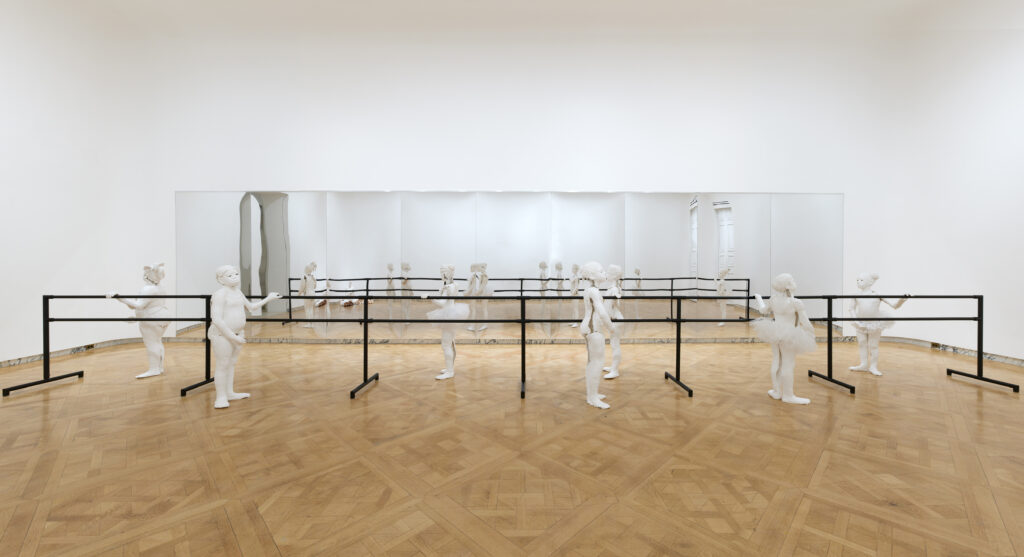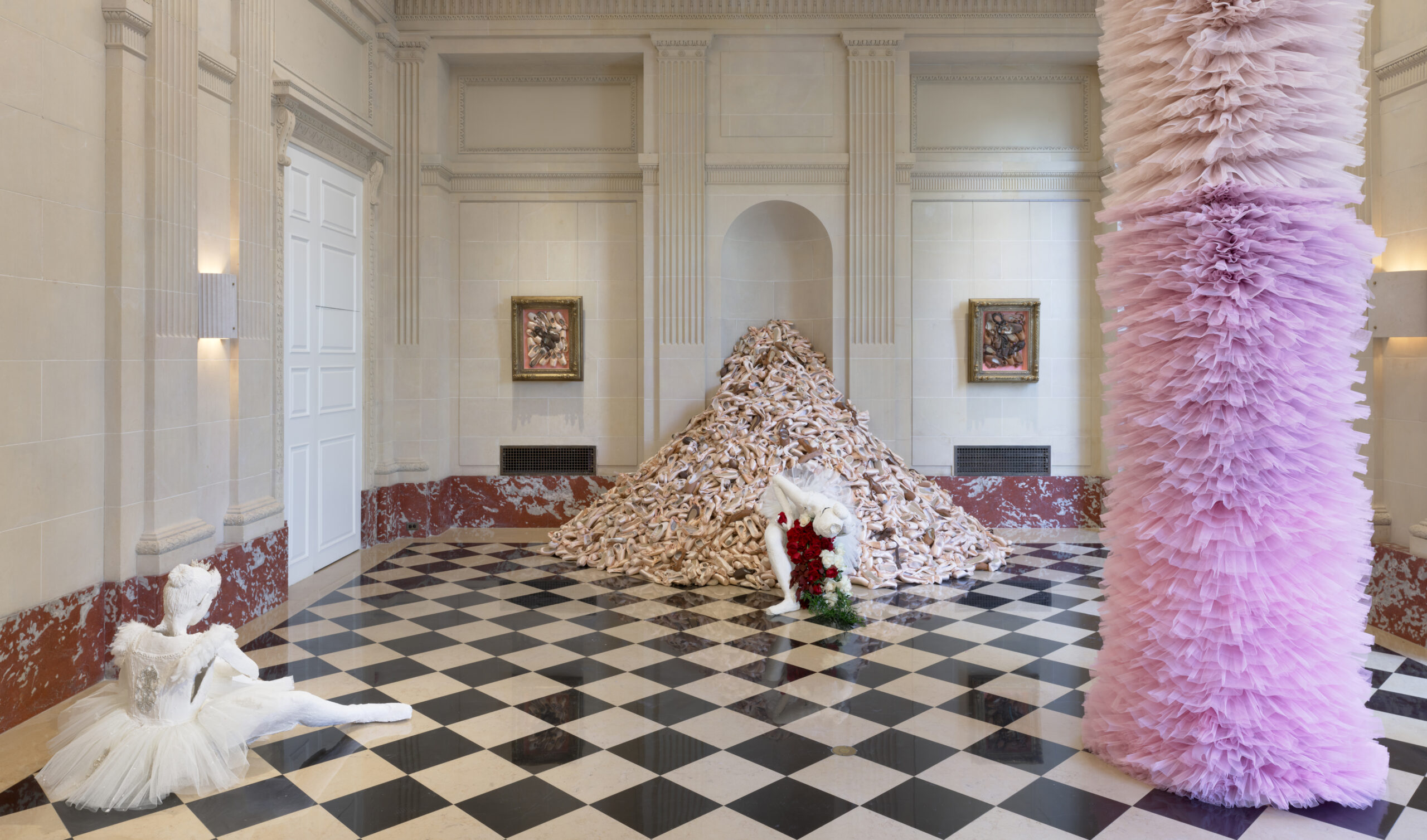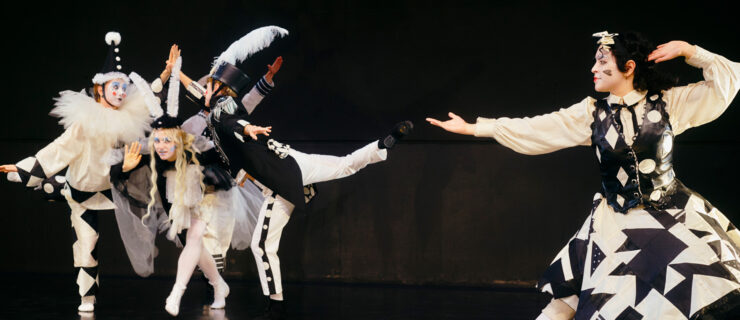Artist Karon Davis’ New Exhibition Grapples With the Physicality and Grit of Ballet
Inside a historic landmark building on the Upper East Side of Manhattan, a ballet landscape sits frozen in time. Towers of tutus and mountains of pointe shoes rise from the black-and-white tiled floors while plaster casts of dancers grasp the barre and stand, eternally, in first position. The tableaux throughout the exhibit feel monumental, alive, tragically gorgeous—and acutely attuned to the complexities of life as a ballet dancer.
This is artist Karon Davis’ new show “Beauty Must Suffer,” on view at the art gallery Salon 94 through December 23. Davis—who is a former dancer and the daughter of Broadway icon Ben Vereen—took a moment to talk about the inspirations for the exhibition, and dance’s constant role in her life.
What was your relationship to the dance world as a child, and where does that relationship stand now, as an adult?
I always say that I come from “show people.” I grew up in musty rehearsal halls and in the wings of productions and on the road, so I didn’t know anything else but dance. Performance was part of my DNA and upbringing. “Beauty Must Suffer” was really inspired by my mom and my sisters—they were the true ballerinas of the family.
I stopped dancing because of a knee injury, but started up again before I began working on this show. I thought it was very important just to be in the headspace of a dancer while creating the artwork. It’s interesting to be in this body now, approaching dance as an older woman. The pain and injuries still come up, but I’m also thinking, Why did I ever stop?
The dance world is often misunderstood by the general public. Did you take this into consideration while creating this artwork?
Definitely. I really wanted to show the labor and the physicality that goes into dance. It’s a lifetime of work. The pile of pointe shoes can be read as a visual representation of a year’s worth of shoes. I have the dancer icing her knee, the dancer smoking a cigarette—things that people rarely talk about but are certainly prevalent, so people really understand what dancers go through to convey that air of perfection.
The installation at Salon 94 is an immersive experience. Can you speak about some of its elements?
The exhibition spans two floors. You begin with these young dancers at the barre. I refer to that room as the “rehearsal room.” It’s about the fight that it takes to even get into the studio. It encapsulates everything from awareness of different body types, to the constant criticism, to Black dancers having to pancake their shoes every day.

I call the second room the “performance room.” You have these ballet dancers in these beautiful costumes, embodying perfection, but once you walk around, you realize that there’s something going on—and that’s where you encounter the injured ballerina, and the ballerina smoking in the corner. I hope people feel like they’re walking through a narrative.
Can you discuss your use of white plaster, which is a trademark of yours, and its context within the historically white world of ballet?
I want to put into the world what I don’t see all the time, and that is Black sculptures. For me, there is no color—instead, it’s in the gesture, and the face, and the structure that you see it. And with this exhibition, there is also the added layer that the ballet world is a white, elite, European environment, and Black dancers have to conform and sacrifice to thrive in it.
What are the biggest takeaways you hope visitors will have?
Pay dancers more! Support your local dancers, or your local dance schools. A career in dance requires so much money—a single pair of pointe shoes can cost you $100! I think there needs to be more knowledge around these details. I want people to walk away with a deeper appreciation for dancers and everything that goes into the final product you see onstage.





